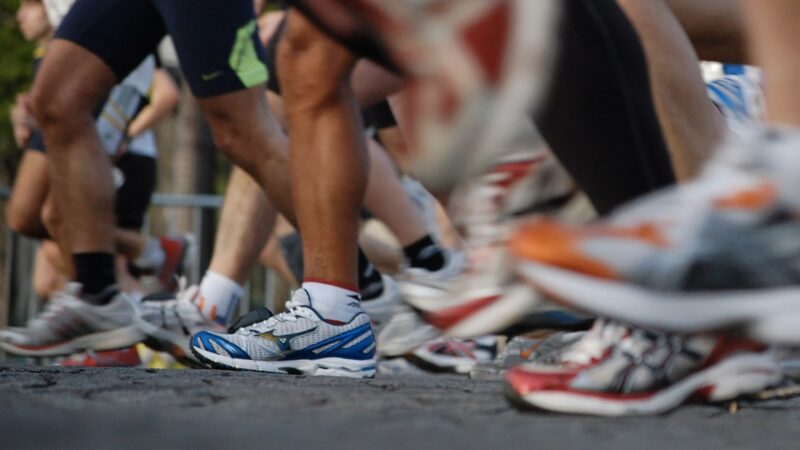What You Need To Know About Running Injuries
One of the most popular forms of exercise in the world, up to 40 million people in the United States run regularly. You can get many health benefits from running but you may also have a high risk of injury, especially from overuse.
The most commonly injured part of the leg is the knee, including patellofemoral pain, or pain between the kneecap and the long upper bone of the leg. Other injuries are shin splint, which is caused by stress on the medial portion of one of the bones of the lower leg, the tibia. The Achilles tendon of the ankle may also be injured by running, and there are other disorders that cause pain, including iliotibial band syndrome, plantar fasciitis, and stress fractures of the bones of the foot call metatarsals, as well as the tibia in the lower leg. Some runners have hip or low back pain. Hamstring pain and calf pain are common in marathon runners. Women typically have hip problems.

There may be many factors that put a runner at risk of injury, including different anatomical configurations, age, gender, type of training, mileage and intensity of running, frequency of running, distance and duration, or changes in the type of training. Runners should increase training by 10 percent each month or less. Running on a treadmill reduces the risk of stress on the tibia and running on a hard surface like concrete may increase the stress.
Prevention of Injury
Stretching
Stretching may reduce the risk of funning injuries. May sports medicine physicians and coaches believe stretching helps to reduce injuries. There have not been many studies that support stretching as a way to reduce injury, but it may help with inflammation of the Achilles tendon, and is recommended in patients with plantar fasciitis.
Running Shoes
The type of running shoes may influence the risk of injury. The three types of running shoes include shoes for runners with a low arch designed to keep the foot in a neutral position, shoes for runners with a foot that turns inward that are cushioned extensively, and shoes for runners with neutral foot shapes. Most extensive studies are done among military recruits in basic training, and they have found that utilizing shoes for a particular foot type doesn’t prevent injury. Nevertheless, clinicians suggest wearing the most comfortable running shoes. Shoes lose more than half of their cushioning after 250 to 500 miles of running. Using orthotics, or customized cushioning or devices to control movement in the foot, may lower the risk of running injury.
The different types of load on the foot and pressures on the bottom of the foot may contribute to injuries, but it is difficult to quantify because multiple factors are involved in running injuries.
Nutritional Factors
It is difficult to decide definitively if nutritional factors have an influence on running injuries. In women, inadequate intake of calcium, vitamin D, and calories increase the rate of stress fracture. Low-fat diets also increase the risk of injury.
The American College of Sports Medicine and the American Dietetic Association recommend that athletes consume enough calories to maintain muscle mass and bone density, menstrual cessation, and delayed recovery from injury. Adequate carbohydrates include 6 to 10 grams per kilogram of body weight to maintain blood glucose levels. Adequate protein includes 1.2 to 1.7 grams/kg of body weight per day. Healthy fats should comprise 20 to 35 percent of total calorie intake, and hydration is important. Runners must drink before, during and after exercise. They should weigh themselves before and after running, runners should weigh themselves and afterwards drink 16 to 24 ounces (2-3 glasses) of liquid for each pound of weight lost during exercise.
Before running, a snack that is high in carbohydrates and low in fat is recommended. Maintenance of electrolytes is important. After exercise, runners should have carbohydrates after exercise. Iron supplements are needed in endurance runners, because it is lost through sweat, menstruation, and the GI tract.
Because some muscle damage occurs as the result of reactive oxygen, athletes may take vitamins C and E, although there is not much evidence to support use of these antioxidants to limit muscle damage.
Psychological Factors
There is not much evidence to support theories that psychological types result in higher or lower injury rates.
Some Tips for Training
Beginning runners should begin with running and walking, gradually increasing the amount of time they run. Training time should begin at 20 minutes per day and increase no more than 5 minutes every two weeks, and probably training every other day to gradually improve their fitness.
Most runners should limit their mileage to 40 miles each week, excepting experienced and elite runners. If runners are going to run longer than 13 miles, this should only be done every 14 days. Four or five days per week are optimal, with a rest day and cross training. Two or three marathons each year are the limit found to decrease the risk of injury.
Warm-ups recommended include beginning with light jog, and stretching after running may be helpful, or improving strength and flexibility through yoga or Pilates.
Aerobic exercise to increase fitness is important to add speed, and it is also better to speed for 20 to 30 percent at variable intervals of continuous runs before interval training. Limit total interval of speed training to 3 miles, and avid downhill runs.
Select comfortable running shoes. Maintain hydration and salt intake if you sweat heavily. Carbohydrate and proteins should be consumed after intense workout. Develop muscular balance by cross training or performing strength exercises for those muscles like hip flexors and abductors that tend to be weak. Increase the flexibility of the Achilles tendon by exercising the calf.





